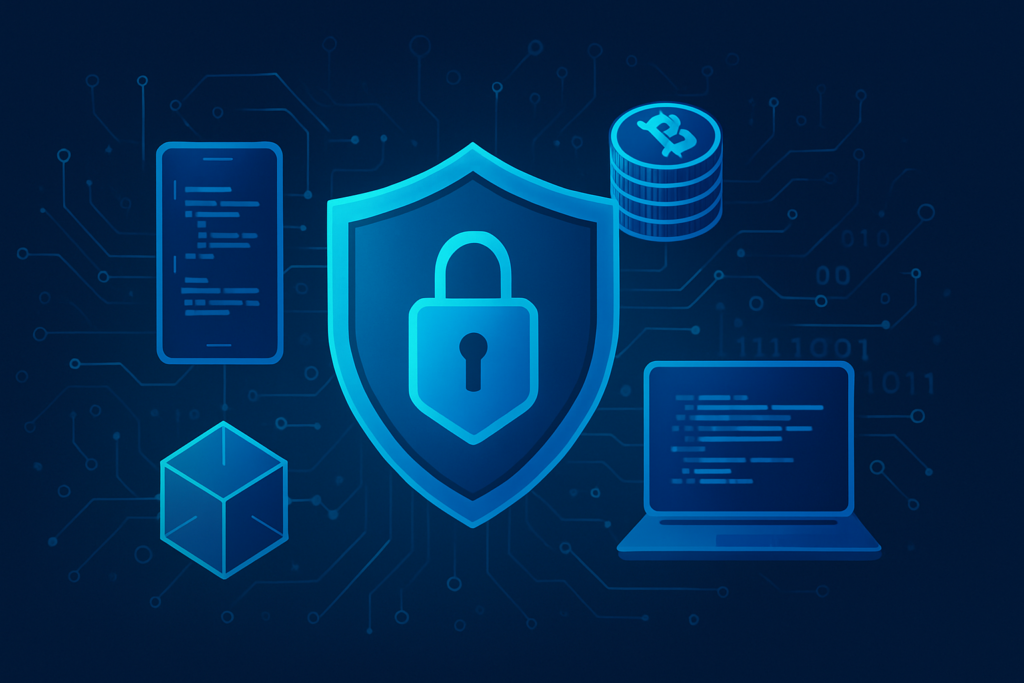The rise of blockchain technology and decentralized applications (dApps) has ushered in a new era of digital innovation. At the core of this revolution lies the concept of smart contracts — self-executing contracts with the terms of the agreement directly written into code. These digital contracts promise automation, transparency, and trustless transactions, transforming how businesses and individuals interact on the blockchain. However, as the technology matures, investors have become increasingly cautious about the security and reliability of smart contracts before committing capital to a project. Understanding what investors look for in secure smart contracts is essential for any blockchain startup seeking funding and long-term success.

The Importance of Smart Contract Security in Investment Decisions
Smart contracts are immutable once deployed, meaning that any flaws or vulnerabilities baked into the code can have irreversible consequences. Unlike traditional software, where bugs can be patched post-release, smart contracts operate in an environment where mistakes can lead to severe financial losses or exploitation by malicious actors. For investors, this risk translates into the potential loss of their capital or damage to their reputation. Therefore, evaluating the security of smart contracts becomes a fundamental criterion when deciding whether to back a project.
Investors know that the trustworthiness of a blockchain project depends heavily on the integrity and robustness of its smart contracts. A secure smart contract not only safeguards funds but also demonstrates the technical competence and professionalism of the development team. In contrast, contracts riddled with vulnerabilities often signal rushed development, lack of expertise, or neglect of security best practices — all red flags for investors.
Key Factors Investors Examine in Secure Smart Contracts
When investors scrutinize a project’s smart contracts, they are essentially seeking assurance on several crucial fronts. These factors provide them with confidence that the project can deliver on its promises without exposing stakeholders to undue risk.
Code Quality and Transparency
The first and most obvious aspect investors look at is the quality of the smart contract code itself. Clean, well-documented, and readable code reflects a disciplined development process. Transparency plays a significant role here — many investors prefer projects that openly publish their smart contract code on public repositories such as GitHub. This openness invites community review and signals that the project team is confident in their code’s security and functionality.
Moreover, investors appreciate when the code adheres to widely accepted coding standards and design patterns within the blockchain community. These standards often incorporate best practices for security and efficiency, minimizing the likelihood of introducing vulnerabilities.
Rigorous Auditing and Security Assessments
Code quality alone is not sufficient. Investors demand rigorous independent security audits conducted by reputable third-party firms specializing in blockchain and smart contract security. These audits provide an expert assessment of the code’s resilience against known attack vectors and logical errors. The audit reports typically detail vulnerabilities found, severity levels, and remediation steps taken by the project team.
A project that invests in multiple rounds of auditing or continuous security reviews conveys a strong commitment to safety. Conversely, the absence of any audit or reliance on low-quality assessments usually raises immediate concerns for investors.
Formal Verification and Testing
Beyond traditional audits, some investors value projects that implement formal verification techniques. Formal verification is a mathematical method used to prove that the smart contract behaves as intended under all possible conditions. While this approach requires additional expertise and effort, it significantly reduces the risk of hidden bugs and exploits.
Comprehensive automated testing frameworks also play an essential role. Investors look for projects that have developed thorough unit tests, integration tests, and testnet deployments, demonstrating that the smart contracts have been scrutinized under various scenarios before going live.
Immutable Yet Upgradeable Design
One of the unique characteristics of smart contracts is their immutability — once deployed, the code cannot be altered. While this feature enhances trust, it also means that bugs or limitations in the contract can be permanent. To balance immutability with flexibility, many projects adopt upgradeable smart contract patterns, such as proxy contracts.
Investors examine whether a project uses upgradeable contracts wisely and securely. Upgrade mechanisms must be designed to prevent unauthorized changes and protect users’ assets. Investors want to ensure that the project maintains a robust governance framework governing contract upgrades, often requiring multi-signature wallets or decentralized governance protocols to approve changes.
Handling of Private and Sensitive Data
Smart contracts operate on public blockchains, where all data is visible to anyone. Investors assess how a project handles private or sensitive information within their smart contracts. Secure projects minimize on-chain storage of confidential data or employ advanced cryptographic techniques such as zero-knowledge proofs or secure multi-party computation.
Investors also look for compliance with relevant regulations regarding data privacy and security, especially for projects handling personal data or operating in regulated industries.
Evaluating Vulnerabilities and Common Smart Contract Risks
Smart contracts are susceptible to various risks and vulnerabilities that investors keenly evaluate before backing a project. Awareness of these risks allows investors to understand the potential attack surfaces and the quality of the project’s mitigation strategies.
Reentrancy Attacks
A notorious vulnerability that has led to several high-profile exploits is the reentrancy attack. This occurs when a malicious contract repeatedly calls back into a vulnerable contract before the initial transaction completes, allowing the attacker to drain funds. Investors scrutinize the contract code for protections against such attacks, such as the use of mutex locks or the Checks-Effects-Interactions pattern.
Integer Overflow and Underflow
Mathematical errors like integer overflow and underflow can cause unexpected behavior in smart contracts. Though many modern blockchain languages and frameworks have built-in safeguards, investors verify that the project uses these protections properly or implements safe math libraries to prevent such bugs.
Access Control and Authorization
Ensuring that only authorized parties can execute sensitive functions is a critical security concern. Investors investigate how the project implements role-based access control, multi-signature requirements, or decentralized governance models to prevent unauthorized access or malicious upgrades.
Denial of Service (DoS) Vulnerabilities
Smart contracts can be vulnerable to Denial of Service attacks, where an attacker disrupts contract functionality or causes excessive gas consumption. Investors check whether the project employs design patterns to minimize these risks, such as avoiding costly loops or ensuring fallback functions are secure.
The Role of Community and Ecosystem Trust
Security is not only about the code but also about the broader ecosystem in which the project operates. Investors value projects that have cultivated an active and vigilant community. A strong developer and user base often leads to faster identification and reporting of vulnerabilities, contributing to overall contract security.
Furthermore, integration with established blockchain infrastructure, wallets, and oracles that follow strict security standards adds an additional layer of confidence for investors. The project’s reputation within the blockchain space, demonstrated through partnerships and endorsements, also influences investor trust in the contract’s security.
Governance and Accountability Mechanisms
Investors appreciate when projects implement clear governance frameworks and accountability measures. This includes transparent processes for proposing and approving changes to the smart contracts, mechanisms for dispute resolution, and clear documentation of decision-making authorities.
When governance is decentralized and community-driven, investors see reduced risk of centralized control abuse. On the other hand, projects with opaque or centralized governance structures tend to generate investor skepticism, as these may expose the contract to arbitrary changes or insider manipulation.
Case Studies: Lessons from Past Smart Contract Failures
To understand what investors seek in secure smart contracts, it is instructive to look at past failures that shook the crypto community. The infamous DAO hack in 2016 remains a stark reminder of the consequences of poor contract security. This exploit resulted from a reentrancy vulnerability and led to a loss of $60 million, dramatically illustrating the importance of thorough security assessments.
Similarly, projects like Parity Wallet suffered from critical bugs in multi-signature wallets, freezing millions of dollars worth of user funds indefinitely. These incidents highlight why investors prioritize rigorous audits, formal verification, and robust governance to avoid catastrophic failures.
On the flip side, projects that have demonstrated strong security postures, such as Uniswap or Compound, often enjoy greater investor confidence, reflected in higher valuations and sustained community support.
Emerging Trends in Smart Contract Security Investors Monitor
As the blockchain ecosystem evolves, so do the security practices and technologies around smart contracts. Investors increasingly look for projects adopting cutting-edge solutions to enhance security.
The use of artificial intelligence and automated formal verification tools to scan contracts for vulnerabilities is gaining traction. Additionally, layered security approaches that combine on-chain monitoring, anomaly detection, and decentralized insurance mechanisms provide extra protection for investors.
Projects that participate in bug bounty programs and incentivize white-hat hackers to uncover vulnerabilities demonstrate proactive security management, further attracting investor interest.
Conclusion: Building Investor Confidence Through Secure Smart Contracts
For blockchain projects, securing investor funding hinges not just on innovative ideas but critically on the security and reliability of their smart contracts. Investors meticulously evaluate code quality, independent audits, upgrade mechanisms, vulnerability management, and governance frameworks to gauge a project’s security maturity.
By prioritizing transparency, engaging in rigorous testing, and embracing best practices in smart contract development, projects can build the trust necessary to attract and retain investor support. In a rapidly growing and competitive blockchain market, secure smart contracts are not merely technical requirements — they are vital pillars of credibility, sustainability, and success.






















